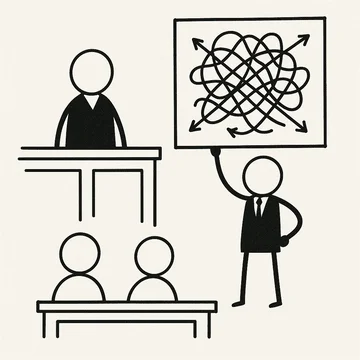
Judge Andrews' form scheduling order for patent cases requires a joint claim chart. In that chart, in addition to listing the constructions, the Court requires the parties to explain why the parties are seeking construction of each term:
The Joint Claim Construction Chart should include an explanation of why resolution of the dispute makes a difference.
Judge Andrews added this requirement in early 2023. I haven't seen much activity on his dockets related to it—until last week.
In Belden Canada ULC v. CommScope, Inc., C.A. No. 22-782-RGA (D. Del.), the parties filed a joint claim construction chart. The chart included 21 terms and, each time, the parties listed their positions as to why the dispute makes a difference.
For each term, the plaintiff said the dispute "may impact" or "relates to" various case issues, along the lines of:
Construction of this term may impact validity and/or infringement and may assist the jury.
or:
Construction of this term relates to Defendants’ invalidity arguments.
Defendant likewise said every single dispute "may impact" an issue in the case, like this:
Resolution on construction may impact noninfringement of asserted claims against Defendants, and also their invalidity, including under Section 112.
or:
Resolution on construction may impact noninfringement of asserted claims against Defendants, and also their invalidity, including under Section 112. Specifically, for example, resolution of this issue will clarify whether structure identified in the prior art and infringement contentions are compensation structures that include capacitive balancers as recited.
To me, it looks like the parties were trying to meet the letter of the Court's requirement, but without risking waiver and without trying to persuade the reader that the dispute matters.
The parties filed that joint chart in November, 2023.
On February 29, 2024, the parties filed their 93-page joint claim construction brief. In their brief, they reduced the number of terms at issue to 19 terms (from 21), which they briefed in 15 groups. For each term, it looks like they repeated their "may impact" or "relates to" statements from the joint chart about why the dispute matters.
The very next day, the Court put the following order on the docket vacating the joint claim construction hearing because of the number of disputes and the fact that neither side would commit to whether a dispute would resolve an issue:
ORAL ORDER: The Joint Motion [requesting claim construction hearing] is DENIED. The scheduled Markman hearing is VACATED. There is one patent with seven independent claims at issue. Each independent claim is asserted. The number of dependent claims that are asserted is less certain, but a reasonable assumption is that it is all of them. The parties identify nineteen terms in dispute, which, with some grouping, they identify as fifteen separate disputes. From the statements of why resolution matters, neither side commits that resolution of any of these disputes is dispositive of anything (except for a few occasions where Defendant has an indefiniteness argument). In short, the parties are requesting resolution of way more disputes than is reasonable. Ordered by Judge Richard G. Andrews on 3/1/2024. (nms) (Entered: 03/01/2024)
Judge Andrews has done this before. This time, however, the Court specifically called out the statements as a basis for the dismissal, in addition to the fact that the parties asked the Court to construe almost twice the generally-accepted number of claim terms for construction (ten).
All of this is to say: Think carefully before seeking construction of more than 10 terms. And in Judge Andrews matters, make sure that you include real descriptions of why resolution of each term matters.
If you enjoyed this post, consider subscribing to receive free e-mail updates about new posts.






